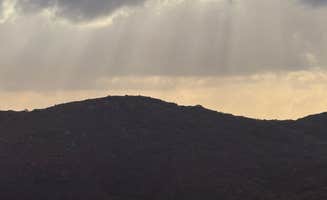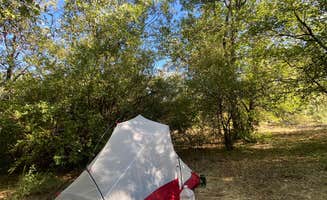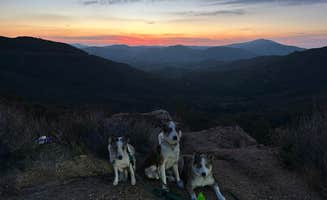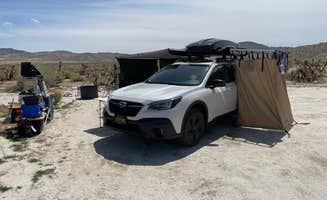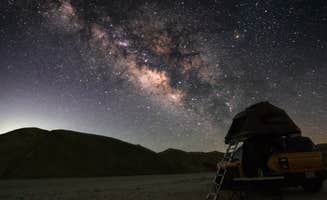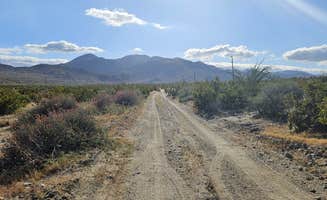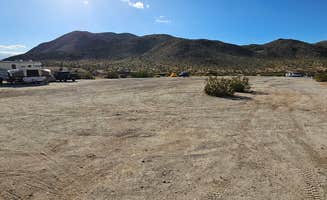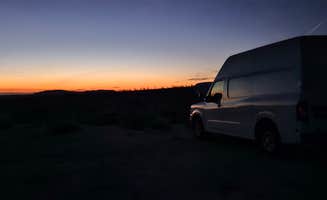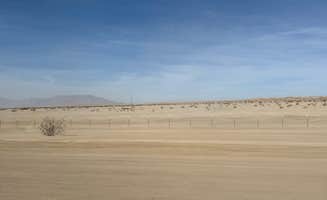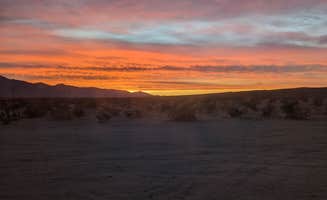Primitive camping near Guatay, California offers access to diverse ecosystems within a 30-mile radius, with elevations ranging from 2,000 to 6,000 feet. The region transitions from pine forests to desert landscapes, creating microclimates that can differ by 20-30°F between nearby camping areas. Free dispersed sites throughout Cleveland National Forest and Anza-Borrego Desert State Park typically limit stays to 14-30 days depending on location.
What to do
Hiking to petroglyphs: At Blair Valley Primitive Campground, trails lead to ancient Native American sites. "Here on the Great Southern Overland Stage Route well off the beaten path is a dispersed camping area that allows you to enjoy the solitude and explore a bit. Ochre petroglyphs, fantastic night sky views, a variety of flora and fauna, hiking, and some challenging 4x4 lines await you here," shares one visitor.
Cave exploration: About 35 miles east of Guatay, the Arroyo Tapiado Mud Caves offer underground adventure. "No matter how hot it is in the desert the caves are always about 60F. Don't come here if it's going to rain because the cliff-sides may fall and block the trail," warns one camper. The caves require flashlights and basic navigation skills.
Metal sculpture viewing: In Borrego Springs, campers can explore over 130 metal sculptures scattered across the desert landscape. "The best feature of this free camping area is the awesome metal sculptures right near this campground," notes a visitor to Galleta Meadows. The sculptures include prehistoric animals, fantasy creatures, and historical figures.
What campers like
Desert solitude: Many campers seek the quiet isolation of desert camping. "I found the perfect spot tucked up against the rocks. I had my own private rock garden with so many variety of cacti and lots of birds. So peaceful," reports a visitor at Blair Valley. Winter weekdays offer the most solitude, while spring weekends can bring crowds.
Mountain scenery: Pine Creek Road Camp provides forest camping with mountain views. "Pine Creek Road itself is paved, and the camping spots are packed dirt so it's easy to get around even in a FWD. Warning though: if you're nervous about driving on single lane mountain roads, this is not the place for you!" explains one camper. The narrow road winds through several miles of steep terrain.
Wildlife observation: The transitional ecosystem supports diverse wildlife. "We saw a few other campers but overall, the campground was ours for the weekend. We did some light hiking and exploring but otherwise took advantage of the peace and quiet that was available to us," reports one Blair Valley visitor. Spring brings wildflower blooms that attract butterflies and birds.
What you should know
Road access considerations: Many primitive sites require careful driving. At Yaqui Wash, "The stretch of dirt road closest to the main road is Sandy, but manageable bull in a two wheel drive. This is where most of the campsites are. Further along the road, there are fewer camp sites, so they are more dispersed, however the road becomes more rocky and jutted."
Permit requirements: Some Cleveland National Forest areas require free permits. "We stopped at the laguna recreation area visitor center before hand to pick up a free permit," notes a Pine Creek Road camper. Another adds, "Friday sent an email to SM.FS.DescansoRD@usda.gov requesting the free permit, filled out the form, and got it back in the same day."
Desert hazards: Desert areas present unique challenges. "Watch out for cactus and needles that are buried in the sand. It is not recommended to bring dogs or walk barefoot for this reason. Our sandals and boots both had many needles stuck in the rubber soles after the trip," warns a Blair Valley camper.
Tips for camping with families
Child-friendly areas: Some areas are better suited for families with children. At Galleta Meadows, "A few dozen sites exist, each some five hundred feet or more apart. All have views of the surrounding mountains, and the wide open skies." The flat terrain and proximity to town (5-10 minutes) make it accessible for families.
Safety considerations: Parents should be aware of potential hazards. "One of my favorite primitive sites. There is one bathroom at the beginning but we typically go much further to find isolation. The further you go towards the pictograph trails, the more cholla so if you have kids, stay towards the first mile," advises one Blair Valley visitor.
Educational opportunities: Many sites offer learning experiences. "In the surrounding rock formations you may find morteros and metates used to process piñon, chia, and acorns that served in making dietary staples like shawii, known elsewhere as wiiwish," explains a camper, noting the indigenous history of the area.
Tips from RVers
Site selection strategy: RV campers recommend specific approaches to finding suitable spots. "The road is a bit narrow but well maintained and there were plenty of trailers out there. Probably wouldn't take anything too too big. I got there at 1:15 on a Friday afternoon and there were some spots off the road on the way in that were open but the spots in the valley had filled up quickly," reports a visitor to Mountain Palm Springs Camp.
Clearance requirements: Many roads require careful assessment. "There were some soft sand spots, didn't require a lot of clearance and I didn't put my Jeep Compass into AWD at all. Probably wouldn't bring a sedan, but there were SUVs pulling pop-ups," notes a visitor to the mud caves area. Most dispersed sites can accommodate smaller RVs under 25 feet.
Parking considerations: RVers should be cautious about where they park. "DO NOT PARK CLOSE TO THE DIRT WALLS (Mostly the overhanging ones). During the night I was out there, high winds brought down a huge chunk that we had passed on the way in," warns a mud caves visitor. Flat, stable ground away from washes is essential.


